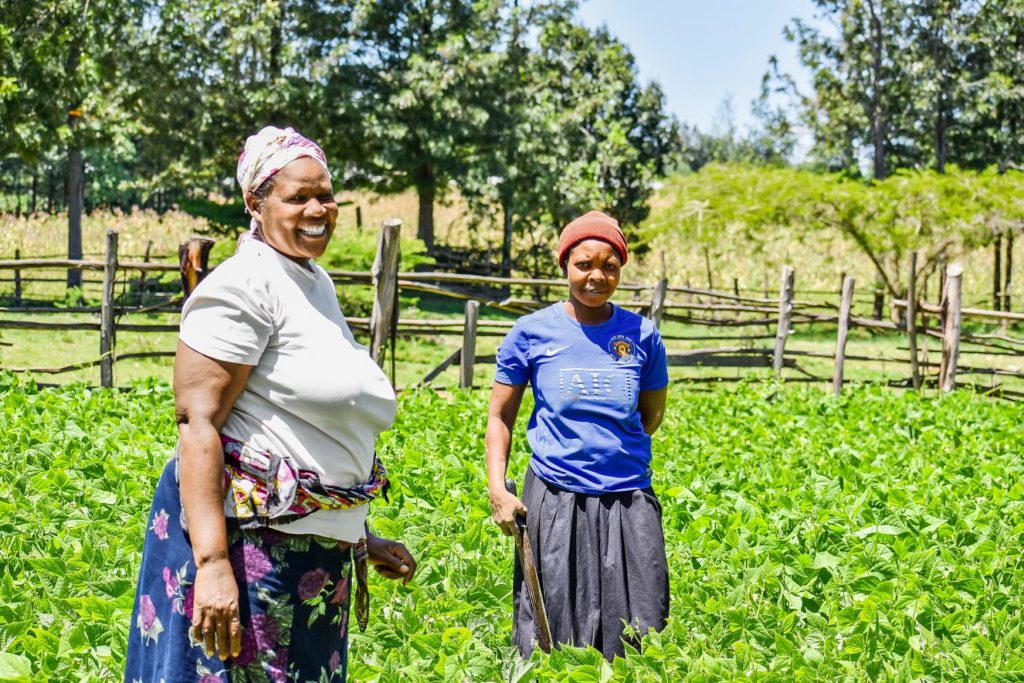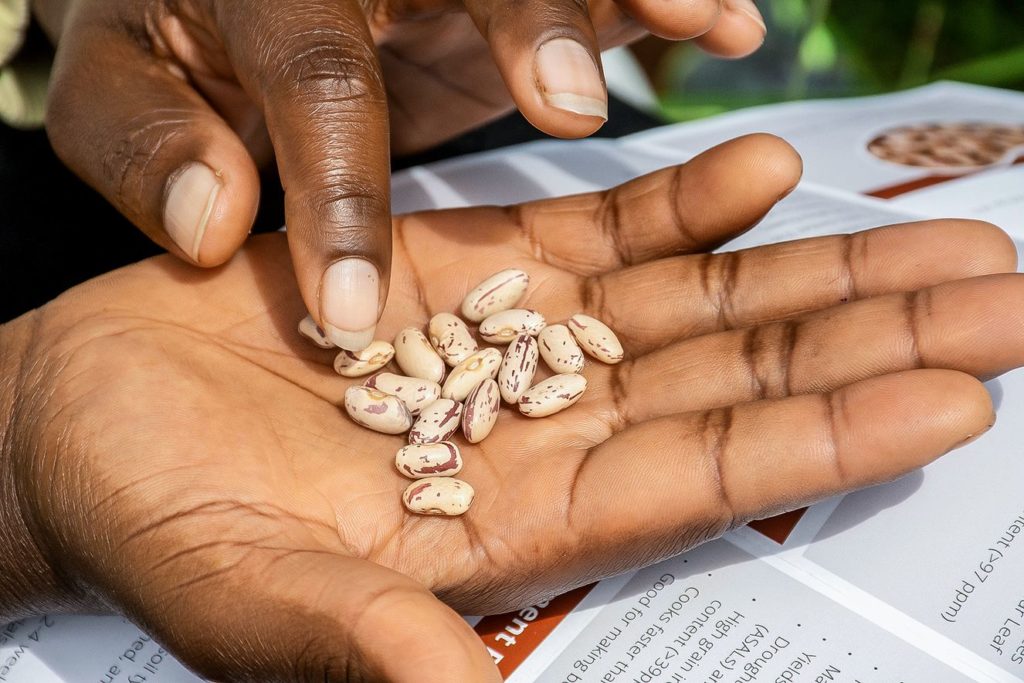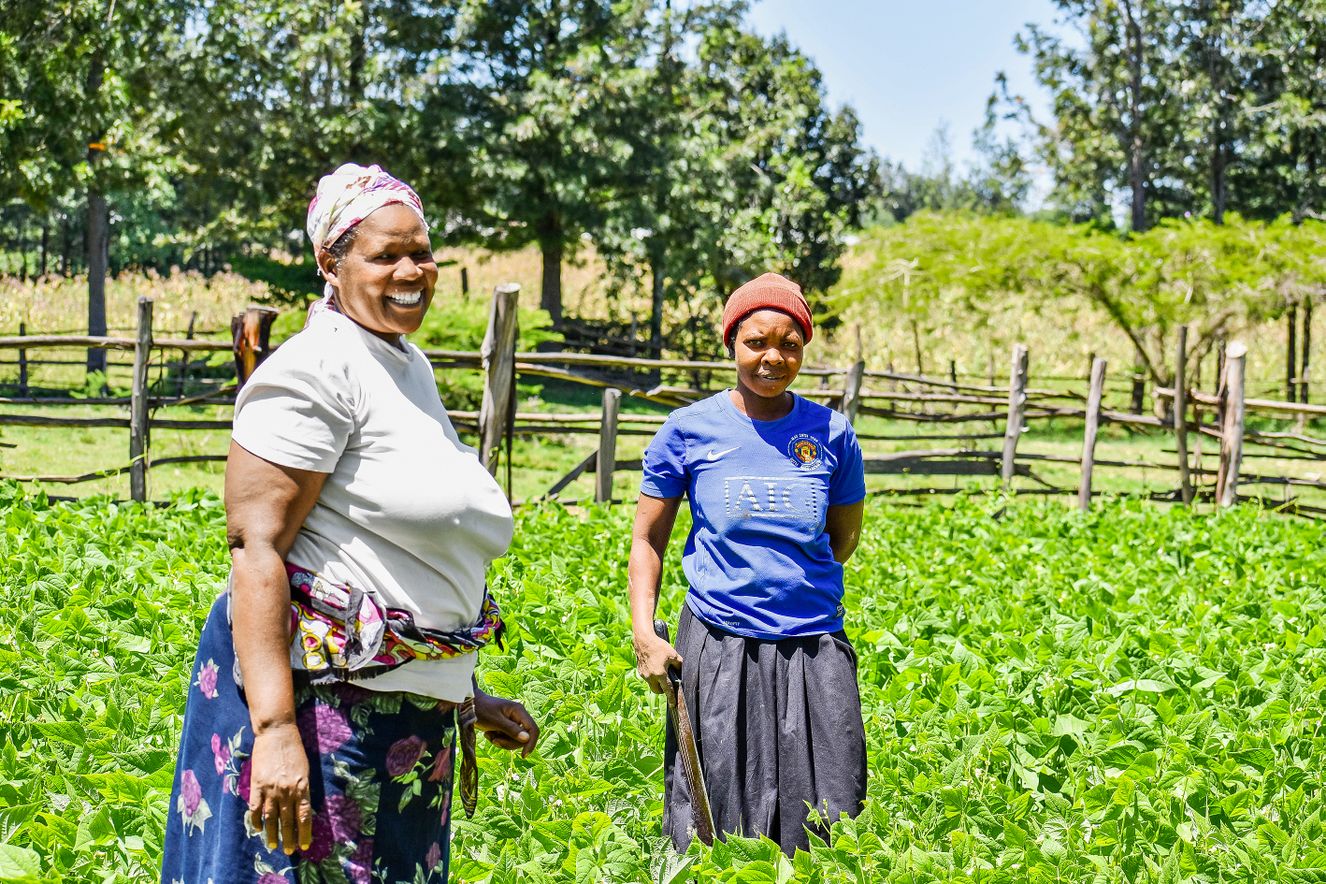Research can play a vital role in reducing poverty and environmental degradation, as has been clearly illustrated in the case of food security. Researchers have helped to achieve remarkable breakthroughs – but they face huge challenges.
Lucy Gituamba never imagined that a bean could change her life to such an extent. Lucy is a retired school teacher and has been growing beans for many years along with other women from the Ushirikiano cooperative in Nakuru in south-western Kenya. She consumes part of what she produces and sells the rest. In 2019, when the cooperative was offered a bean variety with a higher iron and zinc content, the women agreed to the experiment. Iron deficiency is a leading cause of anaemia that affects primarily pregnant and lactating women as well as children below the age of five.

The women from the cooperative attended workshops and learnt how to sow, tend and cultivate the new beans. Today, a good two years later, Lucy Gituamba says: “We would never go back to the old variety.” The new Nyota bean has helped them to almost double the yield on the land they cultivate. The new variety is also more nutritious and takes less time to cook. Many people in the region have switched to the new bean because of these positive experiences said Gituamba. “This innovation has improved the lives of many people.”
Enhanced nutrition value and disease resistance
Jean Claude Rubyogo, Director of the Pan African Bean Research Alliance (PABRA), isn’t surprised. His organisation helped ensure that the Nyota variety found its way to the women of the Ushirikiano cooperative. For the last 25 years, PABRA, an international network of bean researchers, national agricultural research institutes and partner organisations, has been developing more nutritious and resistant bean varieties in Africa. In East Africa, especially, the broad bean has a vital role for nutrition and the economy. Although it is largely produced for domestic consumption, about 40% of production is sold in sub-Saharan Africa.
PABRA has developed and brought to market over 500 new varieties of beans since it was founded. Productivity and food security improved in several countries without any harmful environmental impacts, and bean production could be significantly increased. All this required know-how, a large network and – most importantly – research. Rubyogo explains that prior to developing a new variety, it is essential to first study customer requirements and to understand what farmers need. Knowledge about bean breeding, nutrition, markets, seed systems and other aspects are also necessary.
“To achieve improvements along the entire value chain, we create knowledge in each area,” he says. “The primary objective is not academic publications but actual products that can help people.” In other words: research for development. By adopting this principle, PABRA is part of a movement that has achieved great success in the area of food security over the past decades. Nevertheless, there continue to be massive challenges.

Meaningful research
In the 1960s, new agricultural technologies, fertilisers, pesticides and high-yielding plant varieties were introduced in many developing countries. What was termed the Green Revolution led to a massive increase in global food production and to achieving food security in many countries. International research initiatives and networks, such as the global agricultural research partnership CGIAR, were an important part of this movement. Since 1971, the CGIAR has been working for a world without hunger, environmental degradation and poverty. It currently comprises a partnership of 15 leading agricultural research centres and has a local presence in over 100 countries. In fact, the International Center for Tropical Agriculture (CIAT), which is also part of this network, established the PABRA bean alliance mentioned above.
Fifty years after its founding, the CGIAR and its partner institutions can look back on several significant success stories. These range from innovations in different areas, such as satellite monitoring of rice fields to provide crop insurance data and livestock vaccinations that have proved crucial for protecting livelihoods to innovative agricultural training using digital methods. At the same time, agricultural research has resulted in improving the nutrition value, yields and resistance of countless food crops.
A study published by the SoAR Foundation in 2020 concluded that the approximately USD 60 billion in funding extended to the CGIAR for research since 1981 have resulted in ten times return on investment. The beneficiaries are people in poorer countries, who have benefitted from an improved food supply, cheaper foodstuffs, lower hunger and poverty rates, and a smaller agricultural footprint.
The CGIAR and Switzerland
The global agricultural research partnership CGIAR is working towards a world without hunger, environmental degradation and poverty. Switzerland follows a two-pronged approach: it provides funding to the CGIAR network (CHF 33.1 million in 2020-21), and it supports national agricultural research and extension services in priority countries through specific CGIAR projects. It also promotes synergies between Swiss research institutes and CGIAR centres. The SDC is an active member of the European donor group of the CGIAR, which has an important strategic leadership role.
Close to ground realities
The SDC, which is among the CGIAR’s biggest donors, has also contributed to facilitating these achievements. This partnership is the largest individual commitment of the SDC in the research and development sector and comprises part of a broad portfolio (see separate article). Agriculture and food security account for almost 50% of the SDC’s annual research budget. However, there are also elements of research in countless other sectors, such as health, education, environment and human rights.
For the SDC, research and innovation are not an end in themselves but a means to promote sustainable global development without poverty. Research outcomes are incorporated in the development policy decisions taken by Switzerland and its partner countries as well as in programme activities. They help ensure the efficacy, efficiency and sustainability of development cooperation.
“Our commitment to promoting research has helped us achieve a great deal over the past years,” says Nathalie Wyser, policy adviser for research at the SDC. Nevertheless, the SDC continues to adopt a self-critical approach with a focus on closing the gap between research and the practical needs of people. The UN 2030 Agenda has also been instrumental in prodding the international research community into contributing towards achieving the sustainable development goals (SDGs). The Transform programme, which will be implemented from 2020 to 2030, will have an even greater focus on need-based research projects that will closely involve implementation partners at the policy and practical level in developing countries.
Green Revolution at a dead-end
The integration of research and its practical applications is a huge challenge, and food security is no exception. “The Green Revolution was a huge success simply by transferring research outputs to the farmers,” says Michel Evéquoz of the SDC Global Programme Food Security. “It was focused only on productivity and for a long time, the massive negative impacts were ignored.” It is now obvious that the Green Revolution model has not worked in many regions where there is still hunger. There are also regions that became food secure but have paid a huge price.
Countries such as China, Indonesia, Sri Lanka and Vietnam were able to boost their rice production immensely but are now having to deal with major environmental damage and a loss of biodiversity. “In such countries, the critical question is: how can the current level of production be sustained while preventing the negative impacts?” asks Evéquoz.
This article was first published in the One World e-magazine by SDC

